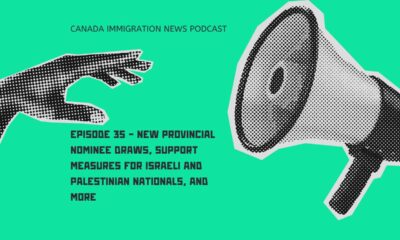Work in Canada
Canada’s Strong Hiring Continues to Benefit Work and Study Permit Holders

With 150,000 positions filled in Canada in the first month of 2023, January experienced a rise in overall employment. Many demographics specially those aged 25 to 54 saw considerable gains in employment as a result of the significant rise in hiring. Also, Non-permanent Residents (NPRs)—who possess either a Study or Work Permit—saw significant increases in labour force participation.
Little has changed since December 2022 in terms of the historically low 5% national unemployment rate. At the end of 2022, the average unemployment rate for immigrants in Canada was 5.96%, which was a reflection of the abundance of employment prospects there.
NPRs filled 79,000 positions in January. International students in Canada with a current study visa will be permitted to work an unlimited number of hours during the academic year, through December 31st, starting in November 2023. According to the most recent census data, NPRs currently make up the largest share of Canada’s population ever, and they also have record involvement in the labour force.
Industries With NPRs Hired In
The following industries in Canada saw the significant increases:
- Professional, scientific, and technical services with over 10,349 people hired;
- Retail trade hired more than 9,717;
- Accommodation and food services employed over 8,848 people;
- Health care and social assistance hired more than 7742 people
This group now accounts for 3.4% of all employment, demonstrating its significance to the Canadian labour market.
Industries With Strong Hiring Gains and Vacancies in January
The following industries experienced strong gains in the first month of 2023:
| Industries | No. of jobs filled | No. of hiring vacancies |
| Wholesale and retail trade | 59,000 | 128,960 |
| Health care and social assistance | 40,000 | 131,775 |
| Educational services | 18,000 | 20,180 |
| Construction | 16,000 | 79,025 |
| Other services | 16,000 | 34,985 |
In addition, the transportation and warehousing sector declined by 17,000 jobs and hiring for around 46,635 vacancies.
Canadian Provinces With Highest Hiring Job Positions
The following provinces experienced the significant rise in hiring job positions:
- Ontario with over 63,000 positions occupied;
- Quebec filled more than 47,000 positions;
- Alberta with over 21,000 positions filled;
- Nova Scotia filled 9,400 positions; and
- Saskatchewan occupied more than 4,500 positions
The employment in the provinces of Newfoundland and Labrador fell by 2,300 positions, however with more open positions. The particulars of each province’s PNP will be determined as the year goes on by job openings, particular in-demand occupations, and hiring. In fact, targeted draws are becoming more common for Express Entry-based programs as well, with in-demand occupations being one of the major factors for earning a targeted invitation to apply (ITA) under this policy.


























